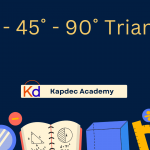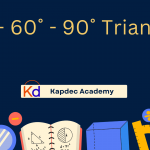The AP Physics C: Electricity and Magnetism curriculum integrates calculus directly into the study of physical laws. The essential calculus concepts serve as the mathematical foundation for formulating and expressing relationships among electric and magnetic fields, charges, currents, and potentials. Mastery of these concepts is fundamental for understanding the theoretical structure of the subject (Refer).
Differentiation
Differentiation expresses the rate at which a quantity changes with respect to another variable. In Electricity and Magnetism, differentiation is applied in the following contexts:
- The electric field is defined as the negative spatial derivative (gradient) of the electric potential.
- Current is the temporal derivative of charge with respect to time.
- Induced electromotive force is the derivative of magnetic flux with respect to time.
Thus, differentiation establishes the precise mathematical connection between changing physical quantities.
Integration
Integration represents the summation of infinitesimal contributions over space or time to yield cumulative quantities. Within Electricity and Magnetism, integration is central to:
- Determining electric potential from the electric field through line integrals (1).
- Computing work and energy by integrating force or field over displacement.
- Calculating electric or magnetic fields due to continuous charge or current distributions through integral expressions.
Integration thereby connects local field quantities to global physical outcomes.
Vector Calculus
Electric and magnetic fields are vector fields defined in three-dimensional space, and vector calculus is indispensable for their analysis. The essential operators include:
- Gradient: The spatial rate of change of a scalar field, as in the relation between electric potential and electric field.
- Divergence: A measure of the net flux of a vector field through an infinitesimal volume, as in Gauss’s Law for electricity.
- Curl: A measure of the rotational tendency of a vector field, as in Faraday’s Law of Induction.
In addition, line integrals and surface integrals are applied to fields over paths and surfaces, forming the integral representation of Maxwell’s equations.
Differential Equations
Many laws of Electricity and Magnetism take the form of differential equations that describe how quantities evolve over time or vary in space. Examples include:
- The time dependence of charge and current in circuits containing resistors, capacitors, or inductors.
- The differential form of Maxwell’s equations, which express local relationships between electric and magnetic fields, charge density, and current density.
Differential equations constitute the theoretical framework for analyzing temporal and spatial variations in electromagnetic systems.
Multivariable Calculus
Since electric and magnetic fields are functions of spatial coordinates and time, multivariable calculus is essential. The use of partial derivatives allows the study of field variations in each independent direction. Surface and volume integrals extend the analysis to three dimensions, enabling the formulation of flux, field distributions, and potential functions in general geometries.
Maxwell’s Equations as a Calculus Framework
The synthesis of calculus concepts is most clearly represented in Maxwell’s equations, which encapsulate the theoretical structure of Electricity and Magnetism.
- Gauss’s Law for Electricity relates the divergence of the electric field to charge density (2).
- Gauss’s Law for Magnetism establishes the absence of isolated magnetic charges.
- Faraday’s Law relates the curl of the electric field to the temporal derivative of the magnetic field.
- The Ampère–Maxwell Law relates the curl of the magnetic field to current density and the temporal derivative of the electric field.
Each law is formulated in both differential and integral forms, requiring a complete understanding of calculus.
1. Differentiation and Electric Fields
- The electric field is often defined as the rate of change of electric potential with respect to position.
- In theoretical terms, this means: differentiation helps us understand how potential varies in space.
- For instance, a steep gradient in potential indicates a stronger electric field.
Why it matters: Differentiation shows you how forces arise from potentials—a key theme in E&M.
2. Gradient and Potential Function
- The gradient operator (∇V) is fundamental. It connects potential energy landscapes to electric field vectors.
- In theory, this concept explains why charges move “downhill” from higher potential to lower potential.
Why it matters: Recognizing the gradient conceptually makes it easier to interpret field diagrams and potential maps.
3. Integration and Gauss’s Law
- Gauss’s Law relates the flux of an electric field through a surface to the charge enclosed within.
- In theory, integration is used to sum up contributions of infinitesimal field lines across surfaces.
- Even without numbers, you should picture this as “collecting all the electric influence” through a surface.
Why it matters: Integration connects the local concept of charge density to the global effect of field flux.
4. Line Integrals in Electric Potential and Work
- When a charge moves in an electric field, the work done is expressed as a line integral.
- Theoretically, this tells us that work depends on the path taken—but in conservative fields like electrostatics, only the endpoints matter.
Why it matters: Line integrals highlight the beauty of conservative forces, where potential energy exists.
5. Divergence and Maxwell’s Equations
- Divergence (∇·E, ∇·B) is used to measure how much a field spreads out or converges at a point.
- In E&M, divergence of electric field relates directly to charge density (via Gauss’s Law in differential form).
Why it matters: Understanding divergence helps students grasp how local sources (charges) generate global fields (3).
6. Curl and Magnetic Fields
- Curl (∇×E or ∇×B) represents the tendency of fields to “rotate” around a point.
- In electromagnetism, curl connects electric fields to changing magnetic fields and vice versa (Faraday’s Law, Ampere-Maxwell Law).
Why it matters: Curl illustrates how electricity and magnetism are dynamically interconnected.
7. Surface Integrals and Magnetic Flux
- Magnetic flux is calculated as a surface integral of the magnetic field across an area.
- Even without calculations, think of this as “counting how many magnetic field lines” pass through a surface.
Why it matters: Flux is at the heart of Faraday’s Law, explaining how changing magnetic environments create electric currents.
8. Differential vs. Integral Form of Maxwell’s Equations
- Maxwell’s equations are the unifying framework of E&M.
- Each law can be expressed in both integral form (global view) and differential form (local view).
- For example, Gauss’s Law: one version talks about total flux through a surface, while the other talks about charge density at a point.
Why it matters: Seeing both perspectives deepens understanding of fields at every scale.
FAQs on Calculus in AP Physics C: Electricity & Magnetism
Why is calculus required for AP Physics C: E&M?
Because electricity and magnetism deal with fields that vary in space and time, and calculus is the language of change. Without derivatives and integrals, it would be impossible to express these variations mathematically.
Do I need to know vector calculus for this course?
Yes, at least the basics. Concepts like gradient, divergence, and curl are central in Maxwell’s equations. You won’t dive into advanced multivariable calculus like in college, but you must understand their physical meanings.
How is integration used in electricity and magnetism?
Integration helps us add up infinitesimal contributions of charge, field, or potential over regions. For example, finding the electric potential due to a continuous charge distribution requires setting up an integral.
Where do derivatives appear most often in E&M?
They appear when describing rates of change — such as how fast magnetic flux changes in Faraday’s Law or how electric potential changes with position to create an electric field.
What’s the difference between line integrals and surface integrals in physics?
Line integrals (∮ B·dl) follow a curve, useful for circulation of fields.
Surface integrals (∮ E·dA) span over an area, useful for flux.
Both are core tools to connect local and global properties of fields.
Do Maxwell’s equations require calculus knowledge?
Absolutely. Maxwell’s equations are written directly in terms of derivatives and integrals. Without calculus, they cannot even be understood or applied properly.
How does calculus make electric potential easier to understand?
Instead of memorizing formulas, calculus lets you see potential as an accumulated effect of the field. Differentiation and integration reveal the direct relationship between electric potential and electric field.
What level of calculus should I study before AP Physics C?
Basic differentiation and integration
Chain rule and product rule
Understanding of definite/indefinite integrals
Simple vector calculus (dot and cross products)
Final Thoughts
Success in AP Physics C: Electricity and Magnetism depends less on raw memorization and more on conceptual fluency in calculus principles. Differentiation, integration, gradients, divergence, and curl are not just math tools—they are the foundation of how electric and magnetic phenomena are described.
If you want structured guidance, resources like Kapdec’s AP Physics programs provide carefully designed lessons that blend physics theory with the calculus insights needed to excel in both the AP exam and future STEM studies.







